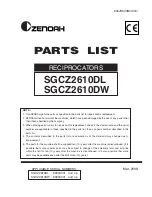
14
TABLE INSERT
Disconnect machine from power source.
The table insert (A) can be positioned in the saw table with
the opening in the insert pointing to the front of the table, as
shown in Fig. 18, or to the right as shown in Fig. 19.
With the table in the level position, 90° to the blade, the insert
(A) should be positioned, as shown in Fig. 18. This allows for
the blade to be pivoted forward after it is unclamped from the
top blade holder, enabling you to quickly insert the blade into
the next hole in a pattern when doing inside-cutting, as you
will see later in this manual.
When tilting the table for bevel cutting operations the insert
(A) should be positioned as shown in Fig. 19. This allows for
clearance of the blade when tilting the table.
A blank table insert (B) Fig. 20, is supplied as standard
equipment with your scroll saw and can be used when
cutting very small workpieces to give added support to
the bottom of the workpiece. Cut a slot into the blank and
replace the standard insert (A) with the blank (B). The slot
cut into the blank (B) will only be as wide as the blade giving
maximum support to the bottom of the workpiece. Adhesive
backed spacer pads (C) are also supplied for adjusting the
table insert height relative to the table surface. Place three
pads an equal distance apart on a cleaned surface to be
applied to the blank insert. Pads can be stacked in order to
achieve desired insert height.
MACHINE USE
FOLLOWINg A LINE
With your scroll saw you should be able to perform straight or curved cuts with ease. Most beginners will experience
blade wandering; however, they eventually learn to control it as they become more familiar with the machine. Use
scrap material to practice cuts before starting a project. This
enables you to develop your own style of cutting and you will
discover what you can do with your saw.
Always hold the work firmly against the table and do not feed
the workpiece too fast while cutting. Feed the workpiece only
fast enough so that the blade will cut. Scroll saws cut faster
across the grain than they do with the grain. Allow for this
tendency when cutting patterns that shift rather quickly from
with-the-grain cuts to cross-grain cuts.
Make "relief" cuts before cutting long curves and never
attempt to cut a curve that is too tight for the blade being
used.
Fig. 18
A
A
Fig. 19
A
B
C
Fig. 20
Fig. 21
A
B
C
D
E















































